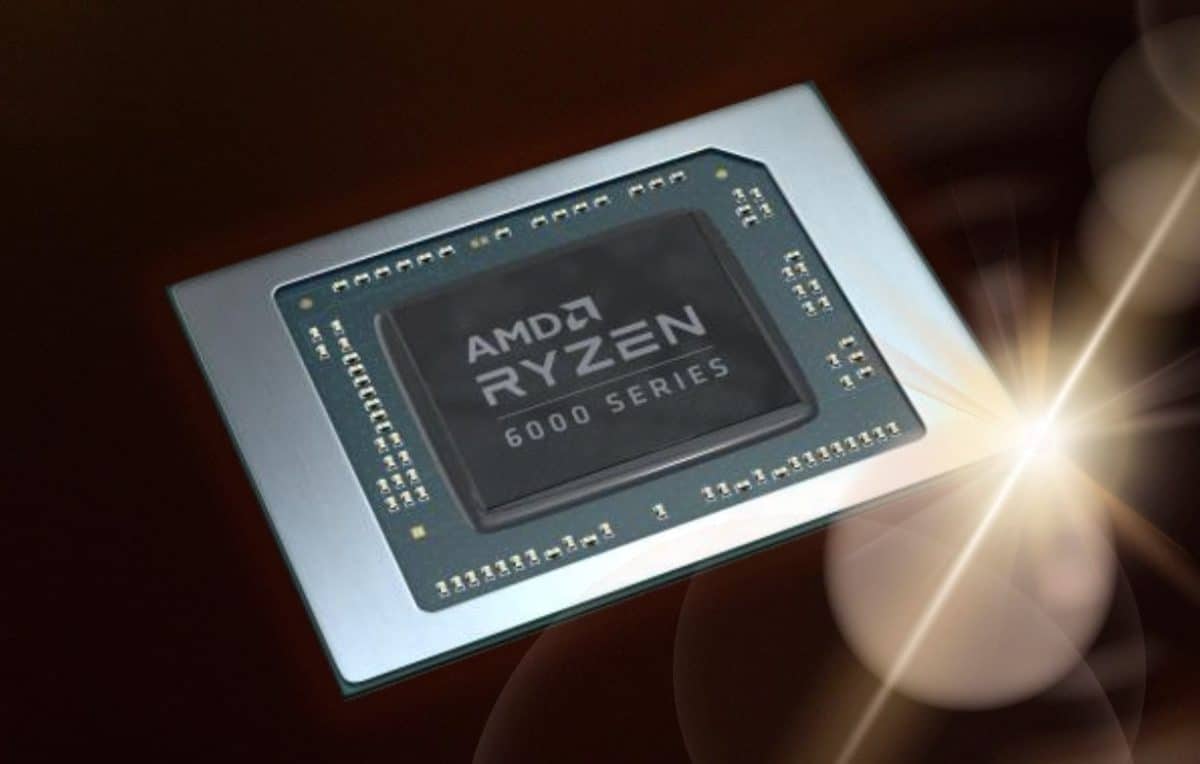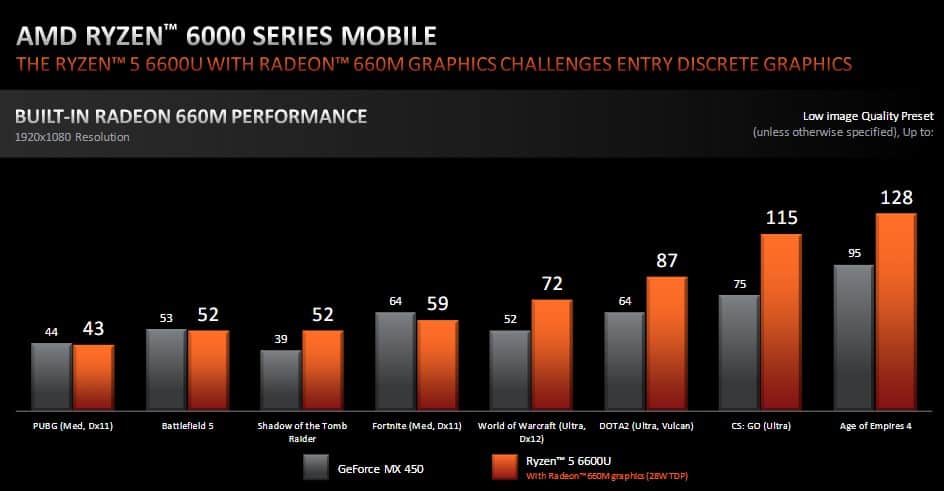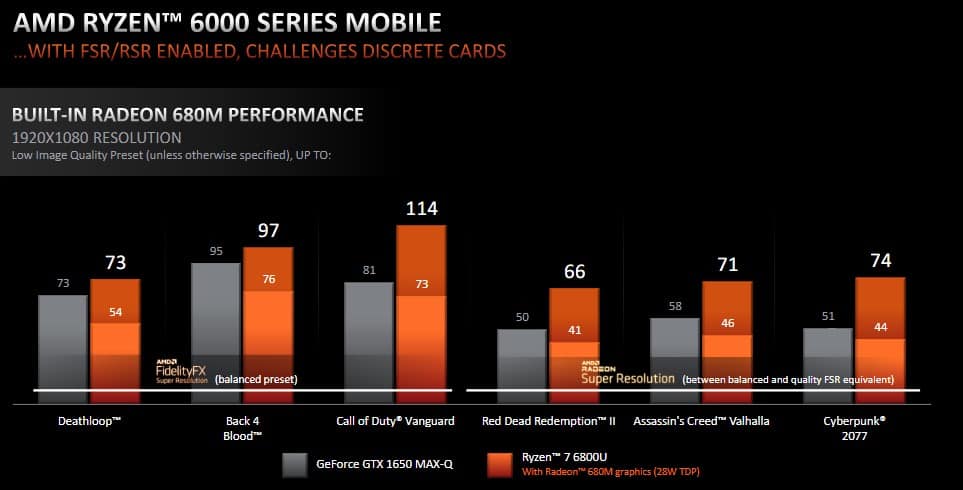AMD Ryzen 6000: What is it, benchmarks, release date

Table of Contents
AMD's Ryzen 6000 series is coming to a laptop near you, bringing with it a host of new features and expected updates to the chipset.
The prior editions of AMD's mobile and APUs, the 4000 and 5000 series, did a lot to attempt to bring the gap between the mobile space and desktop space, with a lot of work done to ensure that the experience wasn't a detriment when using a laptop or mini PC.
Prime Day is finally here! Find all the biggest tech and PC deals below.
- Sapphire 11348-03-20G Pulse AMD Radeon™ RX 9070 XT Was $779 Now $739
- AMD Ryzen 7 7800X3D 8-Core, 16-Thread Desktop Processor Was $449 Now $341
- ASUS RTX™ 5060 OC Edition Graphics Card Was $379 Now $339
- LG 77-Inch Class OLED evo AI 4K C5 Series Smart TV Was $3,696 Now $2,796
- Intel® Core™ i7-14700K New Gaming Desktop Was $320.99 Now $274
- Lexar 2TB NM1090 w/HeatSink SSD PCIe Gen5x4 NVMe M.2 Was $281.97 Now $214.98
- Apple Watch Series 10 GPS + Cellular 42mm case Smartwatch Was $499.99 Now $379.99
- ASUS ROG Strix G16 (2025) 16" FHD, RTX 5060 gaming laptop Was $1,499.99 Now $1,274.99
- Apple iPad mini (A17 Pro): Apple Intelligence Was $499.99 Now $379.99
*Prices and savings subject to change. Click through to get the current prices.
This time around, the 6000 series is split amongst a few CPUs, bringing Zen 3+ and RDNA 2 graphics to a wider amount of devices.
What is RDNA 2?
RDNA 2 is AMD's architecture to provide things like ray-tracing, shaders and other graphical features. It is currently embedded within the current generation of consoles (PS5, Xbox Series X and S), as well as Valve's upcoming Steam Deck. The GPUs it is in the RX 6800, RX 6800 XT and RX6900 XT. Alongside this, the mobile chips RX6600M, 6700M and 6800M also are powered by RDNA 2.
RDNA 3 is set to launch this year with AMD's next update to their desktop GPUs, but RDNA 2 should be more than enough for the 1080p gaming and higher quality of content creation or professional work that they intend to bring to the laptop and mobile space.
What is Ryzen 6000 U vs H?
These chips are being split into two categories, with H indicating the higher tier processors and U being for portability while retaining some power. In a leaked screenshot earlier this year, AMD indicated that only three of the 13 processors for notebooks that are going to be launched will not feature the RDNA 2 architecture.
However, AMD is claiming that even with the U series, these integrated graphics included on the processors can play games surprisingly well – with some caveats.
Gaming benchmarks on 6000 U series

Their performance benchmarks were played on games with low quality presets, at a 1080p resolution. Games like CS: GO and World of Warcraft might not need the quality for immersion but did hit 132 and 105 FPS respectively, while games like Assassin’s Creed: Valhalla (average 47 FPS) might still need the extra-base power of the H-series chips and a discrete GPU to be played comfortably at higher quality presets.
This, of course, is mostly thrown by the wayside if AMD's claims about the upcoming Super Resolution, their new resolution scaling software that allows lower end cards to play at higher graphical settings by inflating the lower resolution to that of a higher one. Essentially, if your theoretical laptop can't play Death Stranding at High 1080p, you set up this Super Resolution to lower it down to say, 900 or 720p and then blow it back up with machine learning and algorithms to produce a better play experience.

The Ryzen 6000 mobile series is once again split into their 3, 5, 7 and 9 performance layers, with the prior mentioned leaked screenshot indicating that the only Ryzen 3 to be introduced this time around will be on one of three chips using Vega, rather than RDNA 2.
Professional benchmarks for 6000 H and HX series
7 and 9 seem to be more focused on those doing professional work on the go, with the Zen 3+ designed to bring both battery and power to the table to allow for hefty working sessions.
From what we've seen, the three chips referenced were the Ryzen 9 6900HX, 6980HS and 6800U. While the 6900HX is going to be the most powerful, with 8 Cores, 4.9GHz boost clock and 45W TDP (how much power it can output). The benchmarks didn't include gaming, but did include PassMark and PCMark Express benchmarks, seeing a performance boost with lower power over the Core i9-11980HK, Intel's flagship 11th gen mobile chip. On PCMark Express had a 0.2x performance gain over the 5900HX.
Other benchmarks saw the 6900HX stomp over almost every other competition, only seeing the prior chip come marginally close each time.
The point here is that with less power, AMD is able to do much more than the 65W Intel chip.
What’s in the new AMD 6000 chips?
Included with the new chips, AMD is not only upgrading the performance but the tools available to you. As well as being the ‘first to fully support Windows 11 security', these chips come with the following:
- USB4 with up to 40Gbps transfer speeds (on par with Thunderbolt 4) using the USB-C framework
- PCI-E Gen 4 for faster speeds for GPUs and NVMe drives
- DDR5 RAM support
- WIFI 6E and Bluetooth LE 5.2
- Microsoft Pluton Security
- HDR Pipeline (with support for BT.2020, DCI-P3, sRGB, OLED and Mini LED)
- HDMI 2.1 (with support for HFR, FRL, DSC, HDR10+, VRR)
- DisplayPort 2 Ready (with support for DSC, UHBR10, Adaptive-Sync, HDR, USB-C)
- AV1 Media Engine (with AV1 Decode)
Release date for Ryzen 6000 laptops
AMD make mention that they're going to be bringing the chips to over 200 different laptops over 2022, but more importantly – to us – is that these chips should be a significant improvement over the 5000 series for emulation and gaming.
As of right now, for a budget, but great emulation box the 5700G for building your own or the various Ryzen mini PCs that litter the market are also excellent choices.
However, once these come to companies like ASUS and Acer get hold of it to put into a tiny PC or those like Minisforum, we should see even better gains for things like RPSC3 and Xenia.
Currently, the lineup for those producing laptops with these chips include and they should be released later in 2022:
- ASUS
- Lenovo
- Razer
- Alienware

